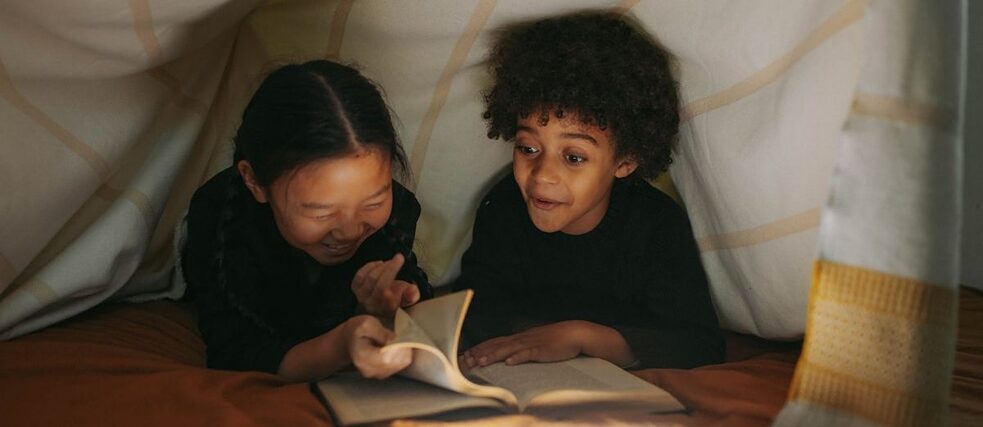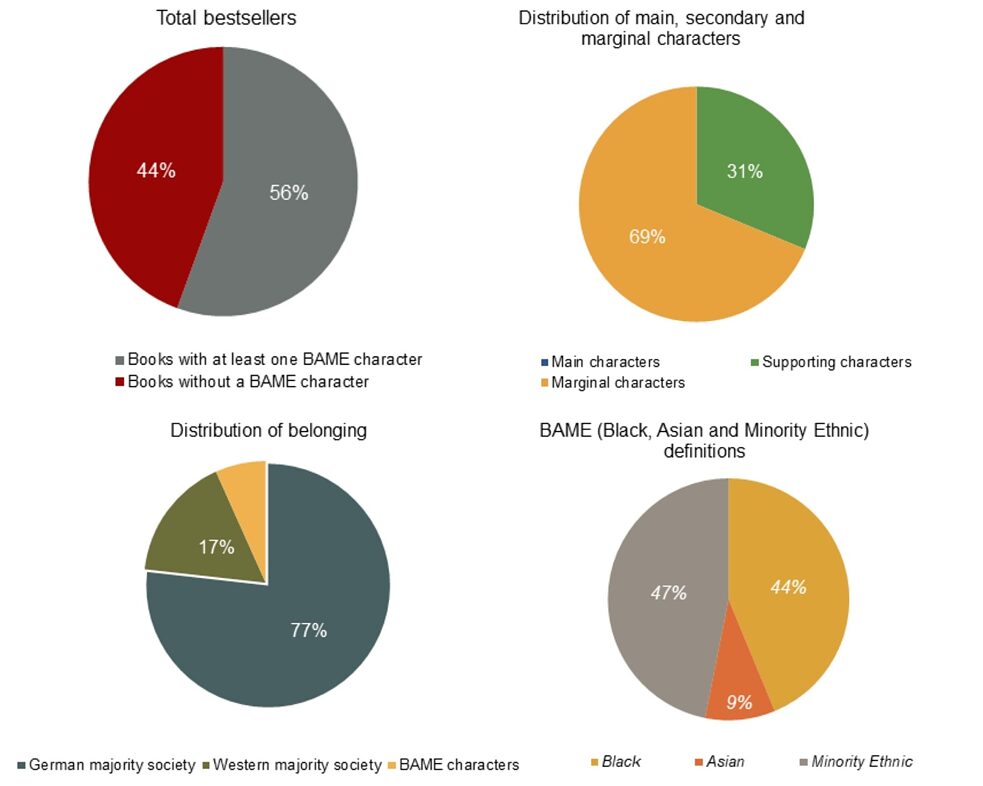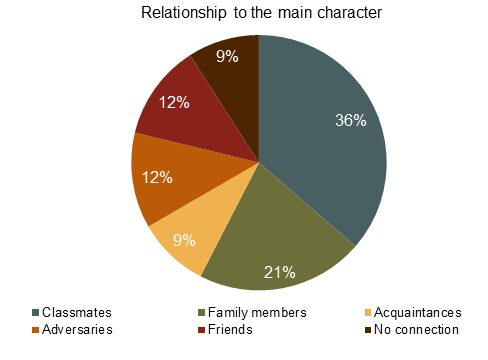Martha Wohlleber
Diversity in current German children’s bestsellers

Photo (detail): Yaroslav Shuraev/Pexels
“All children in Germany have the right to children's literature in which they are not racialized, seen as an accessory, problem or ‘foreign’. All children in Germany have the right to children’s literature that is addressed to, encourages and delights them.” (Noah Sow, 2011)
Context
People from many nations, ethnic groups and cultures live together in Germany. In 2018, 25.5% of the population were first- or second-generation immigrants (Federal Statistical Office, 2020), and the proportion was as high as 35% for children under 15 (Federal Government Commissioner for Migration, Refugees and Integration, 2015). With its diverse stories and characters that provide role models, especially of people who face discrimination, children’s literature can make a significant contribution to a society that includes everyone , help to break down the barrier between “us” and the “other”, and make migration feel both real and “normal”. To achieve this, it is important that children’s literature portrays the whole diversity of a country and gives a voice to all children living there.Studies on children’s literature conclude that the children’s book market has not yet done justice to the diversity of nationalities, ethnicities and cultures in Germany and that in children’s books, BAME (Black, Asian and Minority Ethnic) characters have a limited range of roles. They appear above all “in connection with supposedly ‘typical’ things such as the problem of racism or as embodiments of cultural differences” (Wollrad, 2013, p. 8). The children reading are not unaffected by this, because literature shapes the image that children form of themselves and of other people. Thus, children’s literature contributes to reinforcing the separation between an “us” and the “others” instead of harnessing its potential to unify and integrate.
BAME characters have so far been studied mainly in school books, but also in children’s books on general intercultural or specific topics such as racism and refugees. Previous researchers did not consider their representation in recent bestselling children’s books. This led me to ask a question: Do current children’s bestsellers present a nuanced image of BAME characters?
This article is based on an examination of children's books written in German and set in Germany that were on the children’s bestseller list of the German Publishers and Booksellers Association from May 2019 to April 2020.
Results
The research question was answered in two stages: first, recording whether BAME characters appear in the books and second, creating a role profile of the BAME characters found.In the minority ethnic group, all but one of the characters are Turkish. Belonging to a group is defined through culturally specific names or stating a person’s skin colour or country of origin.
ROLE MODELS OF BAME CHARACTERS
A dedicated role for BAME characters in the books cannot be identified. But there are commonalities between the books. Some selected results are shown below:The spectrum of professions and occupations described is broad – from dish washer to professional footballer, chief physician and star lawyer. High-earning professions form the majority. However, characters can also be classified as criminals. It is interesting to put the BAME characters and their professions in relation to the respective main character. The closer the relationship of a BAME character to the main character, the more high-profile their profession or the higher their standing.
Overall, the BAME characters were not found to represent any “typical” traits. However, one trend did emerge: Many of the characteristics are primarily based in the interpersonal sphere, in particular considerate treatment of characters belonging to the majority. In addition, BAME characters often display traits that can prove useful to others, while their personal or physical characteristics are rarely shown.
Almost all the BAME characters also have negative traits. In many cases, the BAME characters are even the only ones in groups or classes portrayed with negative traits. In particular, non-white characters are portrayed negatively, while characters defined as Turkish tend to have mild negative characteristics.
Conclusion
Overall the results show that, more and more BAME characters are being portrayed and represented in more diverse ways in children’s books. In the books studied here, the BAME characters are not reduced to problem cases, which is often attributed to children’s books. Topics that are addressed with regard to BAME characters in children’s books, such as deportation or discrimination, are not part of the story in any of the books studied. The observed tendency to encourage tolerance for BAME characters cannot be confirmed for these books either. Neither can exoticization or culturalization of the BAME characters. This does not mean that the children’s books studied here create positive or realistic images of a society that includes migrants.On the contrary, the authors of these books refrain from any form of cultural references and avoid naming differences. For the most part, the BAME characters appear to have “adapted” well; the country from which they or their family migrated, its culture, and related experiences or impressions seem to have little significance for them. Only one character describes herself as belonging to her mother’s country of origin and sees advantages in this multiple affiliation. This portrayal of the BAME characters suggests that living together only works when everyone is the same, or when minorities conform to the majority. Instead of making it easier for children to feel comfortable with diversity and differences, the books studied can reinforce a Eurocentric view of the world and “the others”. This makes the need for a diverse range of BAME characters in children’s books particularly clear.
Promising developments are therefore discernible. Overall, however, children’s bestsellers, especially popular children’s series, are still far from meeting Noah Sow’s demands as cited above. In order for all children to feel included and encouraged, bestselling children's books need more diverse characters and, above all, a more nuanced representation of diversity.
Sources
Beauftragte der Bundesregierung für Migration, Flüchtlinge und Integration (BBMFI) (Hrsg.) (2015). Schulbuchstudie Migration und Integration. Paderborn. Verfügbar unter: https://www.bundesregierung.de/breg-de/aktuelles/wie-stellen-deutschlands-schulbuecher-migration-und-integration-dar--745708Sow, N. (2011). Aufruf: Generationenvertrag für PoC Autor_innen. Verfügbar unter: https://www.noahsow.de/blog/aufruf-generationenvertrag-fur-poc-autor_innen/
Statistisches Bundesamt (2020, 28. Juli). Bevölkerung mit Migrationshintergrund 2019 um 2,1 % gewachsen: schwächster Anstieg seit 2011. Verfügbar unter: https://www.destatis.de/DE/Themen/Gesellschaft-Umwelt/Bevoelkerung/Migration-Integration/_inhalt.html [Zugriff am 01.10.2020]
Wollrad, E. (2013). Rassismus in Kinderbüchern. Fachstelle Kinderwelten. Verfügbar unter: https://baustelle2013.kinderwelten.net/content/vortraege/pdf/4_Vortrag_Wollrad.pdf

